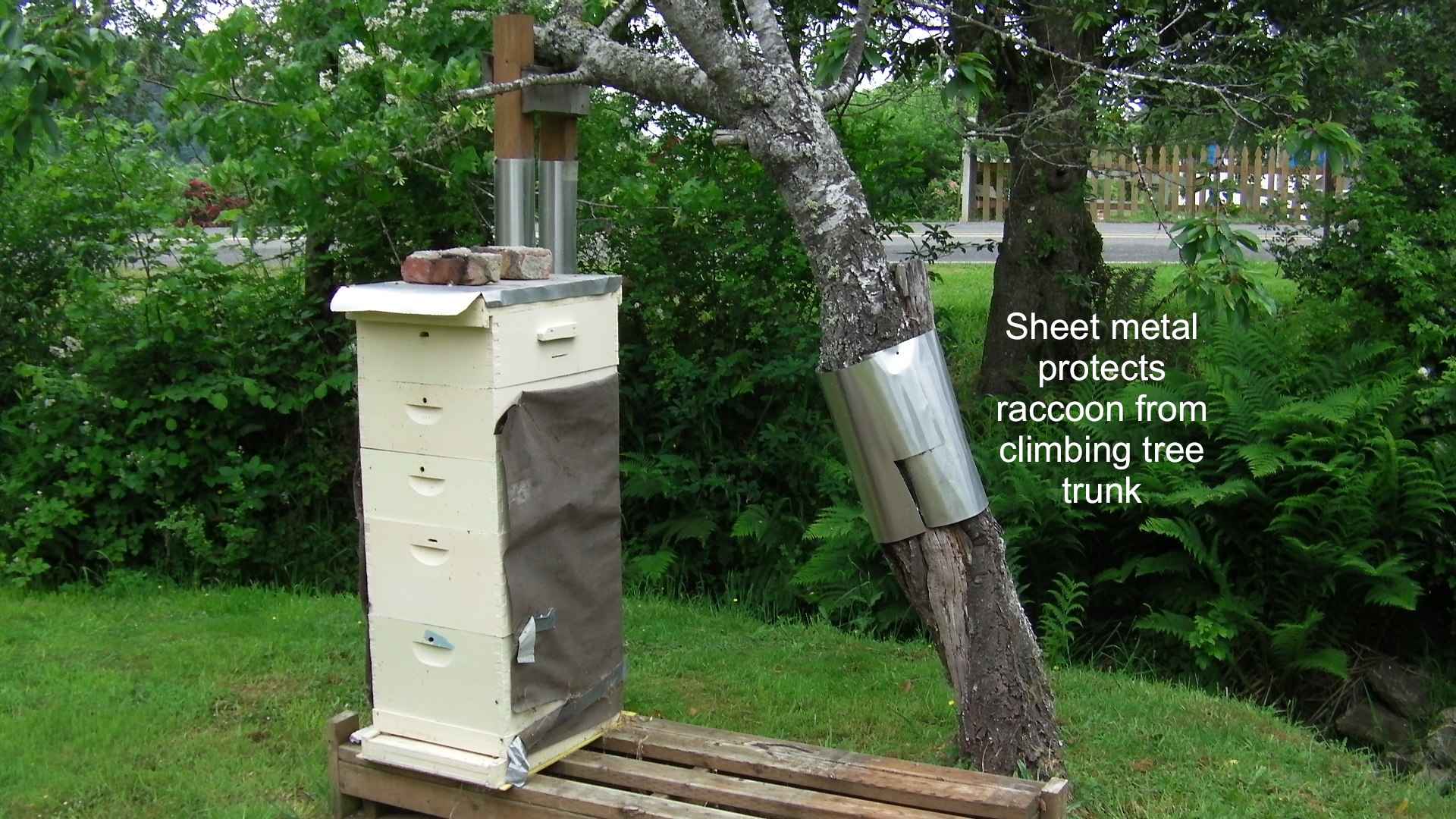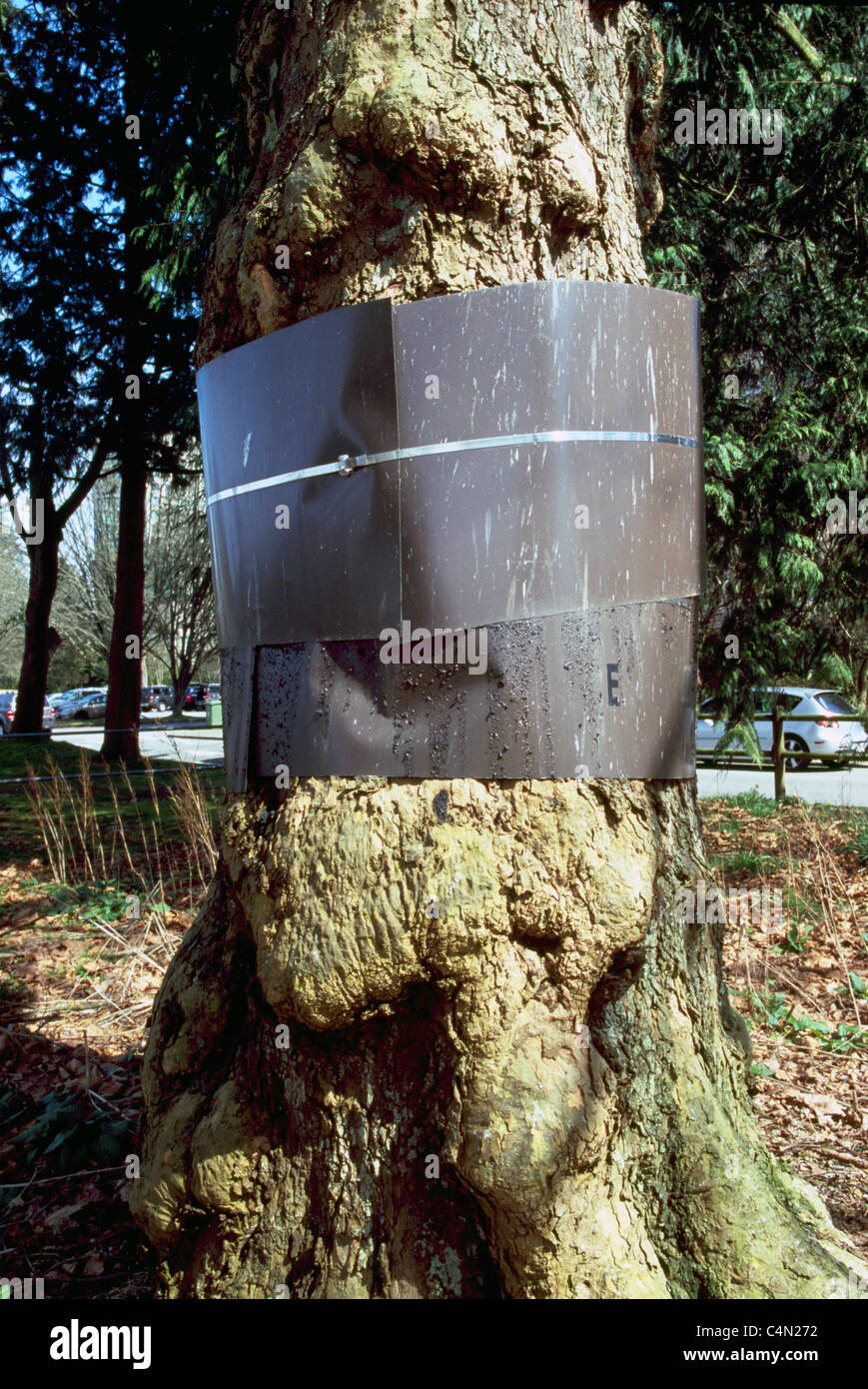Prevent raccoons from climbing trees by wrapping a metal cone around the trunk or applying a slick coating. Raccoons are known for their climbing abilities, but there are effective measures that can be taken to keep them off trees.
One method is to install a metal cone, which is placed around the trunk and prevents raccoons from gaining a foothold. Another option is to apply a slick coating to the trunk, making it difficult for the raccoons to grip and climb.
These preventive measures can help protect trees and prevent damage caused by raccoons. With the right approach, you can discourage raccoons from climbing trees and protect your property.

Credit: solarbeez.com
What Attracts Raccoons To Trees
Raccoons are often attracted to trees due to various factors. One of the main reasons is the abundance of food sources available in trees, such as berries or nuts. Additionally, trees provide shelter and nesting opportunities for raccoons, making them a desirable habitat.
Furthermore, the proximity of trees to nearby structures enables easy access for raccoons seeking shelter or food. To prevent raccoons from climbing trees, it’s important to discourage their attraction to these areas. This can be done by removing or securing food sources, such as bird feeders or fallen fruits.
Additionally, trimming branches that provide easy access to roofs or buildings can help prevent raccoons from entering these areas. Taking these measures can effectively deter raccoons and minimize their impact on trees and nearby structures.
Techniques For Deterring Raccoons From Climbing Trees
Raccoons can be quite a nuisance when they start climbing trees, but there are techniques to deter them. Trimming branches strategically can create obstacles that make it difficult for raccoons to climb. Another effective method is to make the tree trunk slippery using substances like petroleum jelly or metal sheets, preventing raccoons from gaining a foothold.
Additionally, using repellents can discourage raccoons from approaching the tree in the first place. These repellents may contain ingredients such as garlic, cayenne pepper, or predator urine, which deter raccoons due to their strong smell. By implementing these techniques, you can prevent raccoons from climbing trees and causing any disturbance to your property.
So, take preventative actions and keep those raccoons away!
How to Prevent Raccoons from Climbing Trees : Step by Step Guide
Creating A Raccoon-Proof Yard
One effective way to prevent raccoons from climbing trees is by creating a raccoon-proof yard. Start by securing your garbage containers to keep them from accessing a potential food source. Eliminate water sources in your yard, as raccoons are attracted to water.
Installing fences and barriers around your property can also prevent raccoons from gaining access. Additionally, removing any potential nesting sites, such as hollow trees or brush piles, can discourage raccoons from settling in your yard. By taking these measures, you can significantly reduce the likelihood of raccoons climbing trees and causing trouble in your outdoor space.
Frequently Asked Questions On How To Prevent Raccoons From Climbing Trees
What Do Raccoons Hate The Most?
The most disliked thing by raccoons is the smell of ammonia.
Why Do Raccoons Climb Trees At Night?
Raccoons climb trees at night for safety, food, and to escape predators.
Why Do Raccoons Go Up Trees?
Raccoons go up trees for safety, as they can escape predators and find food there.
How Do You Get Rid Of Raccoons On Trees?
To get rid of raccoons on trees, try installing baffles or trimming the branches near your home.
Conclusion
Preventing raccoons from climbing trees requires a combination of proactive measures and ongoing maintenance. By trimming branches and creating barriers, homeowners can block the raccoon’s access to trees, discouraging their climbing behavior. Additionally, implementing motion-activated deterrents and removing attractants, such as food and shelter, can further reduce the likelihood of raccoons climbing trees.
Regularly assessing and addressing potential entry points, such as loose siding or gaps in structures, will also help keep raccoons at bay. Remember to consult local wildlife authorities or professionals if dealing with persistent raccoon issues, as they can provide additional guidance and support.
By following these strategies and staying vigilant, homeowners can effectively protect their trees and property from raccoon intrusions. Safeguarding our outdoor spaces not only benefits us but also helps maintain the delicate balance of nature.

